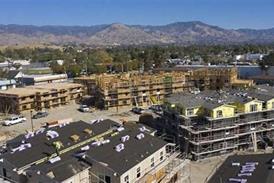Institutional lenders boosted UK real estate lending activity in the last year, according to a new study by Laxfield Capital.
The advisory firm’s annual UK Commercial Real Estate Debt Barometer, which sampled £37bn of loan requests, found increased confidence in the availability of debt, with activity spreading through the market.
Emma Huepfl, head of capital management at Laxfield, said the presence of institutional money marked a “real change” in the commercial real estate debt space.
With sovereign wealth and pension funds, both UK and global, now present, she said: “It’s no longer a bank-dominated market and the presence of institutions mean there’s now a diversity of capital.”
Huepfl said lenders were now active across all sectors, with a gradual improvement in real estate lending activity beyond London. Between October last year and March this year, non-London loans accounted for 52.8% of the UK total.
“Borrowers appear confident that finance is available nationally,” Laxfield’s report said.
The advisory firm recorded a rise in smaller-ticket loan requests, which Huepfl said correlates with increased activity in the regions. Laxfield said 47.2% of requests received in the final quarter of last year were for sub-£50m loans.
Laxfield said average loan-to-value ratios stood at 58% as of March this year, up from 51.8% in September 2013.
A separate report by De Montfort University found that average LTV ratios of new loans rose from 64.2% to 65.9% last year.
The university’s Commercial Property Lending Report for 2013 also recorded increased diversification among lenders, with the role played by ‘non-bank’ lenders such as insurance companies and debt funds more pronounced.
De Montfort said the sector is becoming “more competitive”, with increasingly credible alternatives to traditional sources of debt.
The study also revealed signs of greater diversification. The 12 largest bank lenders held an aggregated 72% of outstanding market debt last year, down from 83% in 2009. Non-bank lenders accounted for 23% of new loans, compared with 15% in 2012.
De Monfort found that outstanding debt held against UK real estate fell by 9.1% from £197.9bn to £179.8bn last year. At its peak in 2008, more than £270bn of outstanding debt was recorded.





















No comments yet